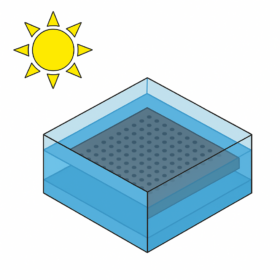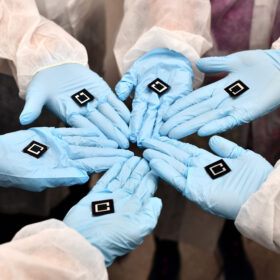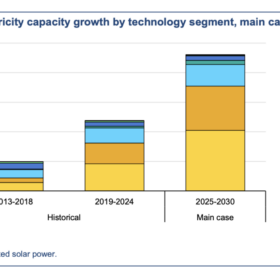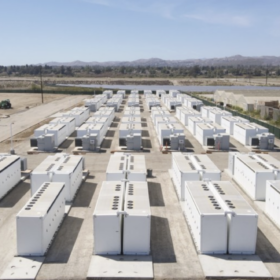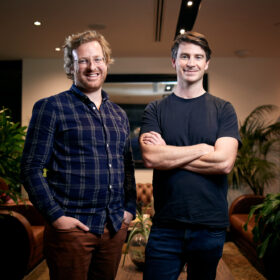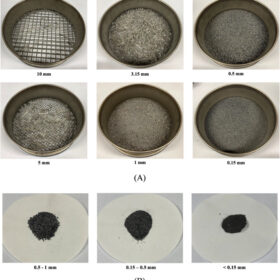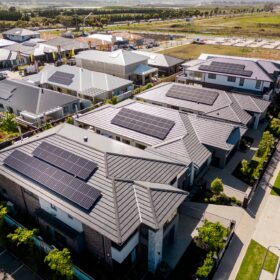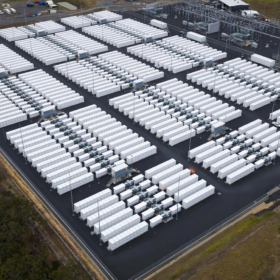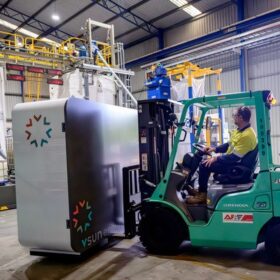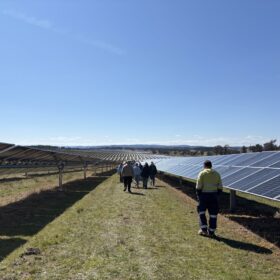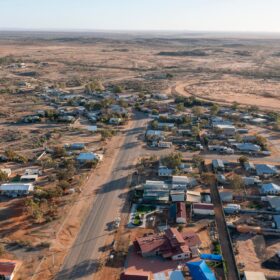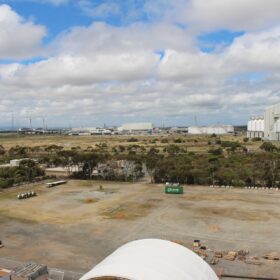CEFC annual number crunch lands on record $4.7 billion in commitments
A record $4.7 billion in 2024-25 investment commitments, more than 2.5 times the value of the previous year, have been reported in the annual report of the Clean Energy Finance Corporation.
Researchers test solar panel cooling using stagnant water layer
Researchers have developed a stagnant water layer cooling concept and tested it using seawater, tap water, and desalinated water. The panel temperature decreased by up to 8.2 °C, while power output increased by approximately 28%.
Australian researchers achieve 27.06% efficiency with triple-junction perovskite solar cell
A team of researchers led by the University of Sydney has fabricated a triple-junction perovskite-perovskite-silicon tandem solar cell that achieved a power conversion efficiency of up to 27.06% and set new standards for thermal stability.
IEA lowers 2025-30 forecast for solar growth
The International Energy Agency has cut its 2025–30 renewables forecast by 5%, citing lower solar additions, though PV still represents nearly 80% of 4.6 TW expected growth.
Operational faults cut returns in 19% of battery storage projects
A recent report from battery intelligence firm Accure reveals that while most battery energy storage systems operate reliably, nearly 19% of projects experience reduced returns due to technical issues and unplanned downtime.
Amber continues overseas push with home energy management tech
Energy retailer and technology company Amber Electric has secured $10 million in new funding to continue scaling its residential solar and battery automation tech into overseas markets.
New sieving tech for solar cell silver recovery
Researchers at University of New South Wales have reported details about a novel sieving-aids technology that improves the separation of metal fragments from other components when recycling end-of-life PV panels. The patented process reportedly enhances the recovery of silver.
One quiet change is about to let you export much more solar
Australia has more solar panels per person than anywhere else in the world. One in three houses now has rooftop solar. Our grid operators are working hard to adjust to a new reality where the collective output of rooftop solar is one of our largest sources of power.
Novel fluorine recovery method promises polymer recycling benefits
Researchers have developed a novel defluorination method to dispose of PTFE, used in solar componentry and electric cable coating, that converts its constituent fluorine compounds and could enable eco-friendly polymer recycling.
Building-integrated concentrating photovoltaics for vertical applications
An Indian-British research team has developed a building-integrated linear concentrating PV facade by sandwiching an asymmetric compound parabolic concentrator, PERC cells, and encapsulation layers between two sheets of glass.

